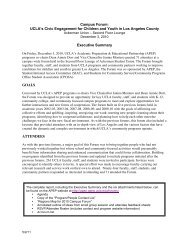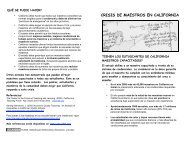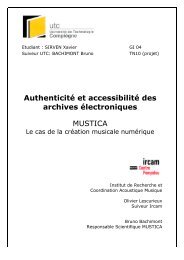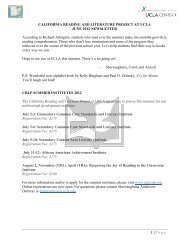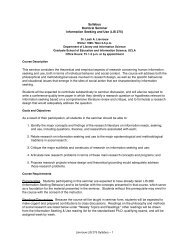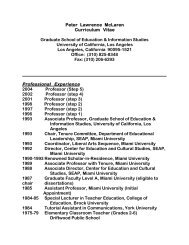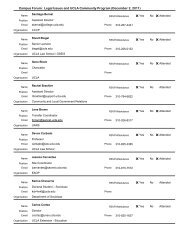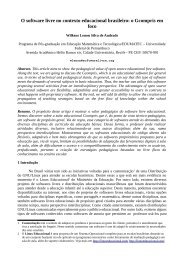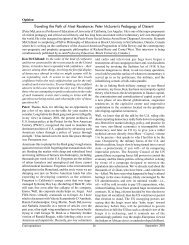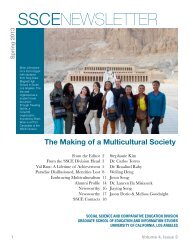1.1 From Digital Humanities to Speculative Computing - UCLA ...
1.1 From Digital Humanities to Speculative Computing - UCLA ...
1.1 From Digital Humanities to Speculative Computing - UCLA ...
You also want an ePaper? Increase the reach of your titles
YUMPU automatically turns print PDFs into web optimized ePapers that Google loves.
5. Discrete representations 5. Heteroglossic processes<br />
(Static artifacts) (Intersubjective exchange/discourse fields)<br />
6. Analysis /observation 6. Subjective deformance/intervention<br />
(Mechanistic) (Probabilistic)<br />
The digital humanities community has been concerned with the creation of digital <strong>to</strong>ols<br />
in humanities contexts. The emphasis in speculative computing is the production of<br />
humanities <strong>to</strong>ols in digital contexts. We are far less concerned with making devices <strong>to</strong> do<br />
things – sort, organize, list, order, number, compare – than with creating ways <strong>to</strong> expose<br />
any form of expression (book, work, text, image, scholarly debate, bibliographical<br />
research, description, or paraphrase) as an act of interpretation (and any interpretive act<br />
as a subjective deformance).<br />
Now, here is a brief explanation of the binary pairs in the chart above:<br />
1) Information/’Pataphysics: The use of information technology in digital<br />
humanities supported development of <strong>to</strong>ols for corpus linguistics: counting, measuring,<br />
and thinking differently about the instances and contexts of word use. Other <strong>to</strong>ols allow<br />
for searching, s<strong>to</strong>ring, retrieving, classifying, and then visualizing data. All of these<br />
procedures are based on assumptions of the self-identity of the object, rather than its co-<br />
dependence on those processes. Computational processes constitute their objects of<br />
inquiry just as surely as his<strong>to</strong>rical, scientific, or other critical methods. Informatics is<br />
based on standard, repeatable mathematical and logical procedures. Quantitative methods<br />
normalize their data in advance. These assume a norm and a system that conforms <strong>to</strong><br />
standardizable rules. Information conforms <strong>to</strong> statistical methods.<br />
By contrast, ‘pataphysics derives from the study of exceptions and anomalies in<br />
all their specificity and non-standard form. ‘Pataphysical methods take outliers and<br />
deviation from statistical procedures. Only a punning method suffices, thus the invention<br />
<strong>1.1</strong> His<strong>to</strong>ry / 3/2008 /<br />
52





